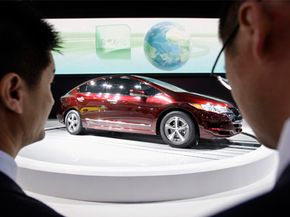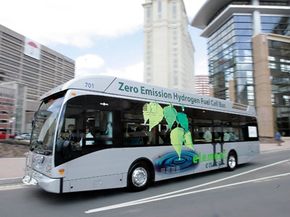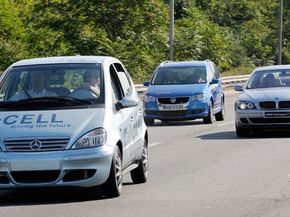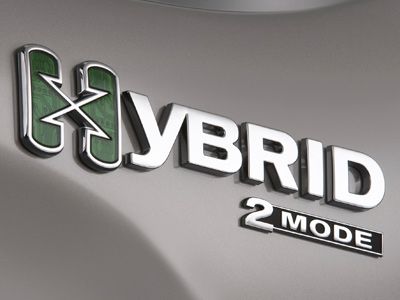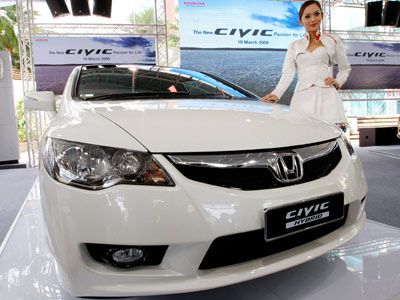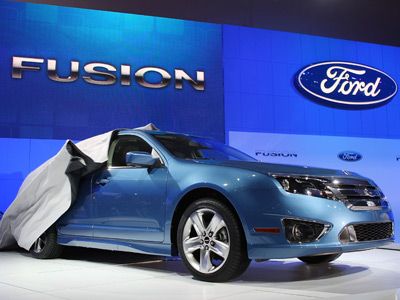The car of the future is here today. Of course, you can't buy one yet; but if you live in California you can lease one. It doesn't use gasoline and it doesn't pollute the air. In fact, it produces steam instead of exhaust. So what's the mystery fuel? Hydrogen -- the simplest and most abundant element in the universe. And some people think that in 20 to 30 years, we'll all be driving these hydrogen-powered, fuel-efficient vehicles.
Although hydrogen-powered cars have a science fiction quality to them, the idea isn't really new. Actually, the technology for using hydrogen to generate power has been around since the first part of the 19th century -- that's longer than cars have been around. What's new is that you might actually see a hydrogen-powered car on the road, with steam coming out of its exhaust pipe instead of foul-smelling gases. Several hydrogen cars are now in existence, but most of them are concept cars. These eco-friendly driving machines include the Chevrolet Equinox, the BMW 745h and the one that's currently available for lease in California, the Honda FCX.
Advertisement
What makes a hydrogen car possible is a device called a fuel cell, which converts hydrogen to electricity, giving off only heat and water as byproducts. Because it's non-polluting, hydrogen seems like the ideal fuel for the 21st century. A lot of people in the government and the auto industry are excited about its potential. Hydrogen cars have the potential to be fuel-efficient and offer the hope of eco-friendly, green driving. But there are still a lot of problems that need to be overcome and questions that need to be answered before hydrogen becomes the fuel of choice for enough people to make much difference in our current use of fossil fuels. For instance, where will we get the hydrogen? How expensive will these fuel-efficient cars be to purchase? Will you be able to find a hydrogen fuelling station to refill your tank? And, perhaps most importantly, as a fuel, is hydrogen really as non-polluting as it seems?
We'll look at those questions in the pages that follow, but we can give you one quick answer right now: Unless you happen to live in very specific parts of the country and have pockets lined with cash, don't expect a hydrogen car in your driveway within the next decade.
Advertisement
